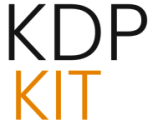Enhanced Typesetting Techniques for Professional-Looking Books
In the realm of publishing, the artistry of typesetting plays a pivotal role in transforming manuscripts into visually captivating masterpieces. Enhanced typesetting techniques bestow a professional polish upon books, elevating their readability and overall appeal.
The Art of Typography
Typography, the foundation of typesetting, involves the meticulous selection and arrangement of fonts, type sizes, and spacing. By harmonizing these elements, typesetters craft a visually pleasing and legible text that guides readers effortlessly through the pages.
Font Selection
Choosing the appropriate font is paramount. Serif fonts, with their graceful curves and flourishes, exude elegance and are ideal for traditional works. Sans-serif fonts, with their clean lines and simplicity, are perfect for modern texts.
Type Size and Spacing
Type size and spacing are crucial for readability. Large fonts enhance accessibility, while smaller fonts save space. Proper spacing ensures clarity and prevents the text from feeling cramped or cluttered.
Layout and Page Design
Layout and page design encompass the arrangement of text, images, and other elements on the page. A well-executed layout enhances readability, creates visual interest, and guides the reader’s eye.
Margins and Gutters
Margins and gutters, the white space around the text, provide breathing room and improve readability. Wider margins create a sense of space, while narrower gutters allow for more text on the page.
Headings and Subheadings
Headings and subheadings break up the text and create a hierarchical structure. They help readers navigate through the content and quickly identify important sections.
Images and Visuals
Images and visuals enhance the narrative and make the book more engaging. They break up the monotony of text, illustrate concepts, and evoke emotions.
Justification and Alignment
Justification and alignment refer to the positioning of text within the margins. Justified text creates a clean, uniform appearance, while left-aligned text is more casual and easy to read. Center alignment is often used for headings and titles.
Hyphenation and Justification
Hyphenation is the process of splitting words at the end of a line to prevent unsightly gaps. Proper hyphenation enhances readability and ensures a balanced text appearance.
Advanced Techniques for Enhanced Typography
Advanced techniques such as ligatures, kerning, and tracking further refine the aesthetics of typesetting.
Ligatures and Kerning
Ligatures are special character combinations that create a more harmonious visual flow. Kerning adjusts the spacing between individual characters to improve readability and eliminate awkward gaps.
Tracking
Tracking refers to the uniform adjustment of character spacing. Tight tracking creates a condensed appearance, while loose tracking increases the space between characters.
Collaboration and Workflow
Successful typesetting requires effective collaboration between authors, editors, designers, and printers. Clear communication and efficient workflows ensure that the vision for the book is realized.
Author-Editor Collaboration
Authors and editors work together to refine the text, ensuring clarity, consistency, and flow. Editors provide feedback on typography, suggest improvements, and ensure that the typesetting aligns with the book’s overall design.
Designer-Printer Collaboration
Designers and printers collaborate to translate the typesetting into a physical book. Designers provide layout specifications, while printers ensure that the text is rendered accurately and meets industry standards.
Glossary of Enhanced Typesetting Techniques for Professional-Looking Books
- Enhanced Typesetting Techniques: Methods used to improve the visual appeal, readability, and overall quality of typeset books.
- Typography: The art of arranging and selecting fonts, type sizes, and spacing for optimal readability and visual impact.
- Font Selection: Choosing the appropriate font based on the book’s genre, tone, and target audience.
- Type Size and Spacing: Determining the appropriate type size and spacing to enhance readability and prevent visual clutter.
- Layout and Page Design: Arranging text, images, and other elements on the page to optimize visual interest and guide the reader’s eye.
- Margins and Gutters: White space around the text to improve readability and create a sense of space.
- Headings and Subheadings: Breaking up the text into sections and creating a hierarchical structure for easy navigation.
- Images and Visuals: Enhancing the narrative and making the book more engaging by incorporating images, illustrations, or other visual elements.
- Justification and Alignment: Positioning text within the margins to create a clean and balanced appearance.
- Hyphenation and Justification: Splitting words at the end of lines to prevent unsightly gaps and ensure a uniform text appearance.
- Ligatures and Kerning: Refining the aesthetics of typography by adjusting the spacing between characters.
- Tracking: Uniformly adjusting character spacing to create a condensed or expanded appearance.
- Author-Editor Collaboration: Collaboration between authors and editors to refine the text and ensure consistency, clarity, and flow.
- Designer-Printer Collaboration: Collaboration between designers and printers to translate the typesetting into a physical book, ensuring accurate rendering and industry standards.





